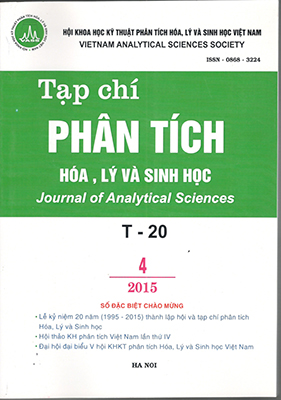ADSORPTION OF LEAD FROM AQUEOUS SOLUTION USING ACTIVATED RED MUD
Abstract
Red mud is a highly alkaline waste material formed by the Bayer process of aluminaprduction in bauxite exploitation and alumina industry. It has high metal oxides content whichare active components for the adsorption of heavy metal cations. In this study, Alumin LamDong, Tay Nguyen red mud was obtained then characterized and investigated for removal oflead (Pb) from aqueous solution. The characterization of red mud performed by XRD andSEM shows a significant powder structure with very high increase of surface area of almost1.5 times after activation by heat and acid treatment. The factors influencing the adsorptionincluding acid concentration, equilibrium pH and contact time were also investigated. Theresults show that the adsorption properties of activated red mud depend on pH values andacid concentration. The percentage of lead removal was found to increase gradually with theincrease of pH and reach the maximum when pH at 4, then decrease significantly. After thecontact time of 75 minutes, the maximum adsorption capacity of Pb(II) ions is 2.99 mg/g whilethe lead removal percentage reaches about 96%. The Langmuir isotherm model fits well thelead adsorption showing one layer adsorption property.
Keywords: red mud, activated red mud, bauxite residue, lead adsorption, by-productrecycling.

